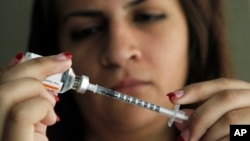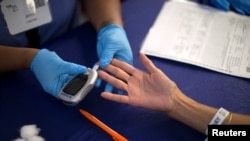As a sugar-rich foodstuff, jelly is not often seen as a good thing for diabetics. But a new gel-based method for administering drugs could cut back on injections for diabetics and virtually eliminate their blood sugar highs and lows. Scientists have come up with a new gelatinous drug form that releases a slow but regular dose of an insulin-regulating hormone. In mice, it kept glucose levels down for five straight days---120 times longer than the hormone alone. And the method could be used to deliver drugs to treat cancer and other diseases as well.
What great news! As one who pricks his finger twice each and every day, jabs a needle into me twice a day, and yet another every time I eat, I can't think of anything better. Read all the story @ Drug Jelly May Replace Insulin Injections for Diabetics : 80beats





